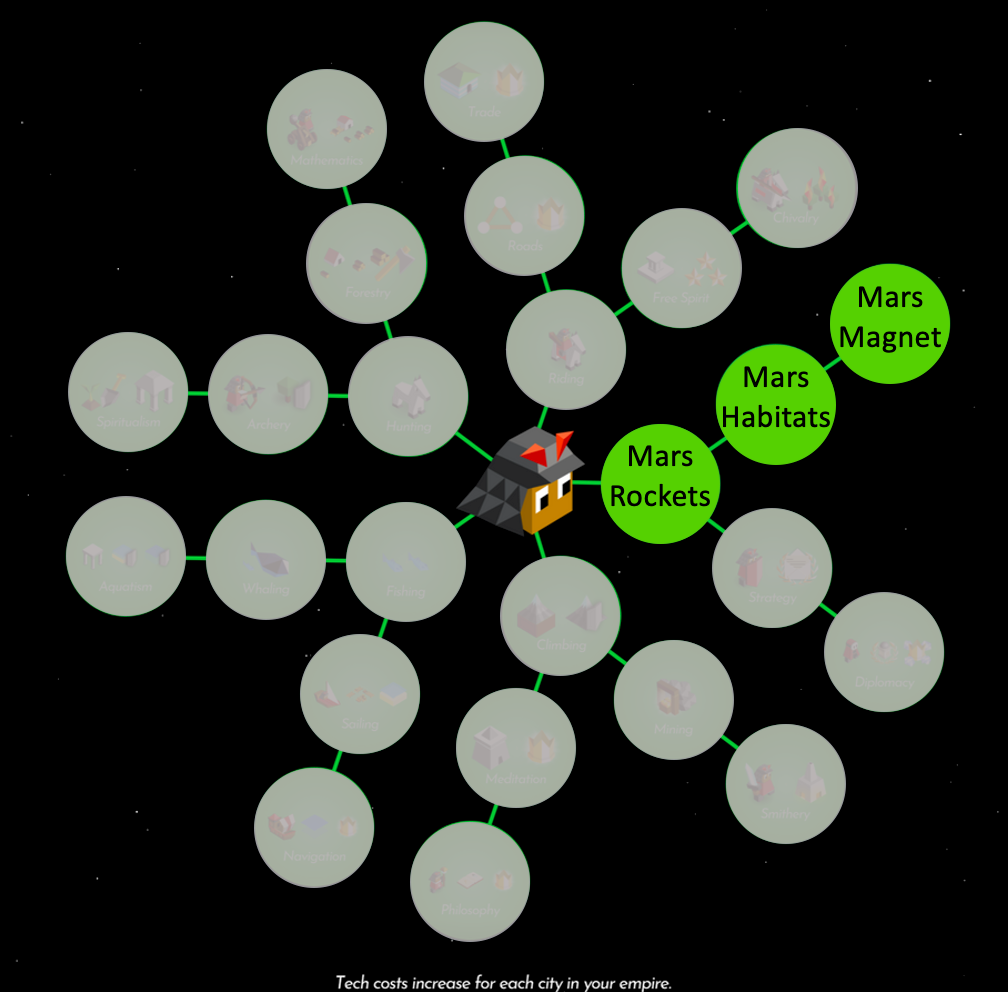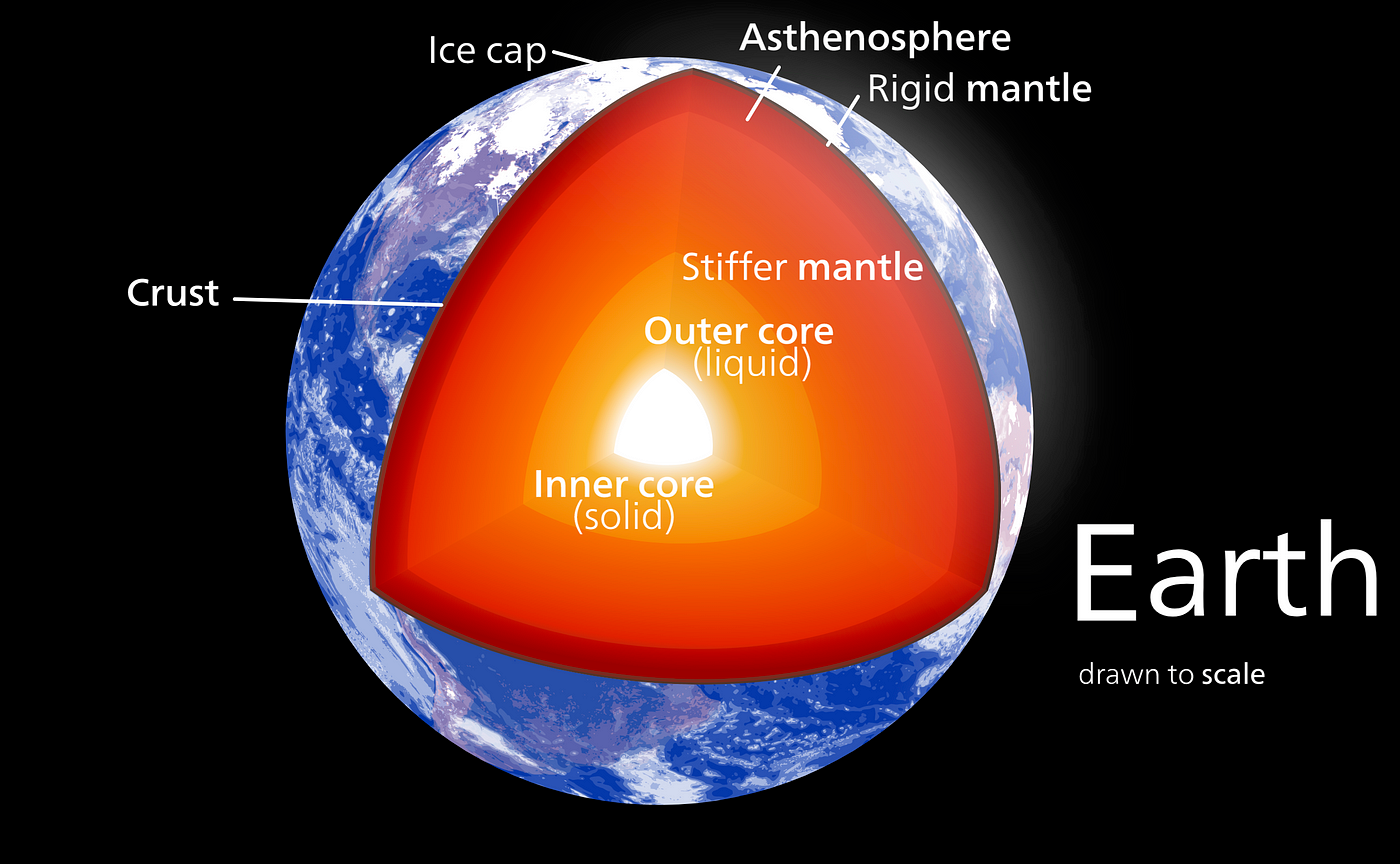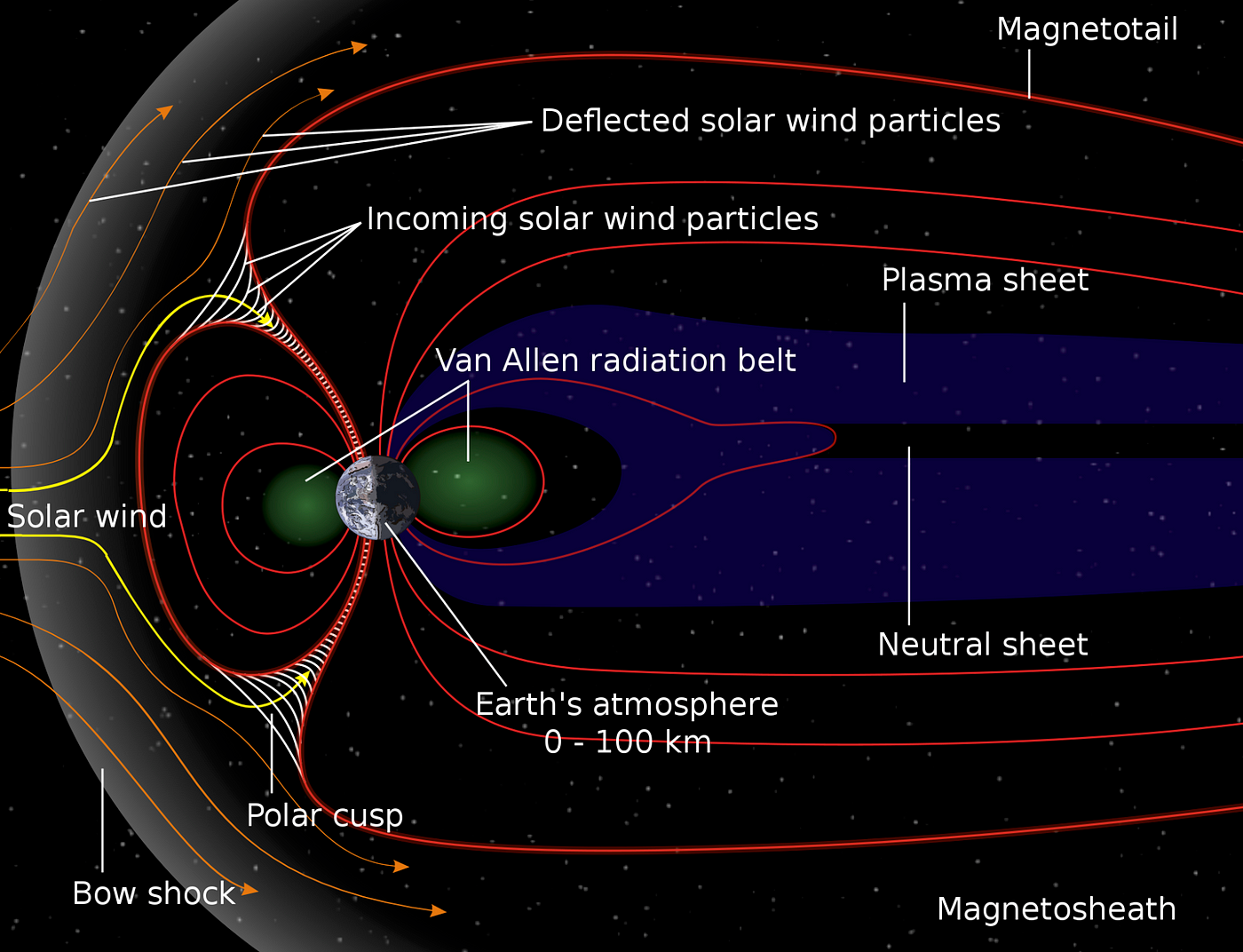by Brinda Thomas, Ph.D.
first published 01/24/2023
Reproduced from Medium.com
One of my favorite casual games is a turn-based strategy game developed by Midjiwan AB called Polytopia, which gets its name for its distinctive polygon vector graphics art style and is available on your mobile devices or Tesla vehicles. In the game, you play as one of several tribes, each of which is gifted in a particular technology or capability based on its history or geographic location. The goal is to maximize points earned by exploring your entire world, which you share with one or more tribes. You have the choice of whether to play peacefully or not. A key concept in the game is that of the Tech Tree, which is the same for every tribe, and this concept is a useful mental model for how technology develops in real life. For example, in the Polytopia Tech Tree diagram below, no tribe can reach the highest levels of ‘construction’ abilities, without first developing their ‘organization’ and ‘farming’ abilities. Note that in the real-world, your tribe includes not only your family, kin and friends, but also the sub-cultures you belong to based on your identity and interests, whether linguistic, cultural, professional, political, etc.

In the game, as in real life, there are levels of technological advancement that must be achieved in order to reach the highest levels of economic development and social progress. Although, in real life, unlike the game, since technology is always progressing and human societies are always changing, it is possible to leapfrog certain steps in the Tech Tree. For example, internet connectivity spread in high-income countries through the business competition between services based on telephone land lines, fiber optic cables, cell phone towers, and satellite-based services. However, by the time middle- and lower-income countries had sufficient income and demand for internet connectivity, they often adopted cell phone tower and satellite-based internet services first, because these were the most efficient and affordable options with the level of infrastructure development available in-country. This type of technological leap-frogging is only possible with government commitment to international trade.
Spaceflight and spacefaring are an example of advanced technological development that many countries are currently exploring in order to create a human settlement of Mars. NASA and other international space agencies and private companies like SpaceX and Blue Origin are currently developing various parts of the space transport systems needed to launch cargo and people into Earth orbit and beyond. However, a human settlement on Mars would not be very comfortable or last very long without an atmosphere, oceans, and many of the environmental comforts we have here on Earth. Mars’s atmosphere has very little oxygen, 0.06% vs. 21% for Earth, with 1% of Earth’s atmospheric pressure. In addition, the surface radiation on Mars about 13 times higher than on Earth at around 8 rads per year. Scientists have not yet discovered life on Mars, and as far as we know, the surface of Mars is a hostile environment to life. To counter these facts, the space exploration branch of the Tech Tree could support all that is necessary to terraform Mars into a place hospitable to life.

One step on the Mars terraforming branch of the Tech Tree requires making the biggest magnet humans have ever made, because Mars’ original atmosphere is constantly being removed by solar wind from the Sun. This means Mars requires an artificial magnetosphere, a topic I have been thinking about for several years. The Sun’s outermost layer, the corona, is a layer of superheated plasma at a temperature of 2 million degrees Celsius which emits a constant stream of high-energy electrons and protons, called solar wind, throughout the solar system. The Earth’s surface is protected from this barrage of radiation by its magnetosphere, a protective shield that surrounds the planet and is formed by the Earth’s internal molten outer core. This molten core of iron and nickel is constantly circulating ions and forms the equivalent of a ring of electric current within the Earth as it rotates on its axis. This internal current generates a magnetic field that surrounds the entire planet in a shape similar to what iron filings would make around a toy magnet, but with an elongated tail stretched out by solar wind forces.


Mars has no such inner magnet or a much weaker one and so Mars doesn’t have much of a magnetosphere to protect the surface from solar wind. All life and technology was developed on Earth under the protection from solar wind radiation with the Earth’s magnetosphere in place. Humans as well as our technologies would require a lot of adaptation to settle on Mars. In addition, the ions from solar wind react with what little atmosphere Mars does have so that much of it is burning off into outer space which would hamper any initial efforts to create an atmosphere on Mars. But there is a solution to the continual removal of Mars’ atmosphere by the solar wind.
Recently, physicists have proposed a promising technical strategy which requires constructing an approximately 5-cm diameter superconducting cable ring at what could be considered a ‘medium-Mars orbit’ of 3400 km from the surface of the planet. Imagine a spinning superconducting cable loop in orbit around Mars, which would generate a magnetic field within and around the planet, so that navigation systems could operate similarly as they do on Earth. With such an artificial magnetosphere, Mars could be protected from the worst effects of space weather from solar storms. Other proposals exist, but this one seems the most ‘feasible’ proposal so far. With a magnetic shield around Mars, efforts to create an atmosphere, perhaps by sublimating the frozen carbon dioxide on the Martian polar caps would not be in vain. Note that a natural rocky ring around Mars, as on Jupiter or Saturn, would not be stable in the long-term.

Physically constructing a superconducting ring around Mars would be no small feat. Physicists estimate that building a superconducting loop around Mars would require mining one billion metric tons of material, or the equivalent of 0.1% of Olympus Mons, to produce a million metric ton magnet. This is about 30 times larger than the largest magnet humans have built to-date, a set of cryogenically-cooled superconducting magnets with a weight of 31,000 metric tons at the European Organization for Nuclear Research (CERN), the site of world’s largest physics laboratories including the largest and highest-energy particle accelerator at the Large Hadron Collider.
Organizationally, constructing such a superconducting ring around Mars would be a task best suited to international cooperation, similar to the efforts involved to create the International Space Station (ISS). The ISS was initially proposed by President Ronald Reagan in 1988, and he invited allied nuclear powers to join in the initial design and planning, and later President Bill Clinton invited Russia to join in 1993. Today, it would be most equitable for at least all nations with space launch capabilities to have the option to join any planetary-scale Mars terraforming efforts, like constructing an artificial magnetosphere. The alternative would be for private actors to lead the efforts, but an international effort would have more global public support.
The future is uncertain, but based on your assessment of the feasibility of human spaceflight to and terraforming of Mars, I leave it to the reader to infer the technologies in the Tech Tree that are likely to be developed and commercialized.
Recommended reading for more details on building artificial magnetospheres for Earth and Mars:
- Dupont, M. and Murphy, J. W. ‘Fundamental physical and resource
requirements for a Martian magnetic shield.’ International Journal of Astrobiology. April 2021. - Motojima, O. and Yanagi, N. ‘Feasibility of Artificial Geomagnetic Field Generation by a Superconducting Ring Network.’ National Institute for Fusion Science. May 2008.
- Bamford, R. A. et al. ‘How to create an artificial magnetosphere for Mars.’ Acta Astronautica. January 2022.
Recommended reading on the history of science and technology:
- Diamond, J. ‘Guns, Germs and Steel.’ W. W. Norton & Company. (1999).
- Pralahad, C. K. ‘Fortune at the Bottom of the Pyramid: Eradicating Poverty Through Profits.’ (2004).
- Kelly, K. ‘What Technology Wants.’ (2010).